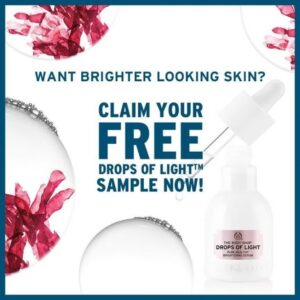Due to the constantly growing number of online offers and comparison possibilities, new strategies are needed today to encourage potential customers to make a purchase. Psychological sales tricks can make all the difference. After all, the purchase of a product is often not made on a rational level, but through a spontaneous and emotional reaction on part of the customer. The following six tips and tricks show how you can specifically integrate sales psychology into your e-mail marketing:
Tip 1: Make your subject line more attractive
First impressions count, and that goes for your email marketing, too! Advertise special highlights, such as discount promotions, special offers, or sales, in the subject line, and you will directly arouse the interest of potential customers.
Give-to-Get: Use the so-called “free effect” to your advantage. By using the words “free” or “gratis” in your subject line, you significantly increase the likelihood that customers will open your emails and decide to make a purchase. Offers such as free trial subscriptions or small, personalized giveaways often pay off in the long run, because they increase the subconscious pressure on the customer to “return the favor” by making a purchase from you.

The Body Shop offers free samples for new customers
Tip 2: Create an anchor effect with your pricing
Once you have piqued the customer’s interest, the next step is to reinforce the impulse to buy. Keep your customers regularly informed about your latest products and offers by e-mail. Since customers automatically base their price estimates on comparative prices in the immediate vicinity, you have the opportunity to determine these.
Place a selection of similar products with higher price ranges next to the product in which you have an increased sales interest. The higher prices are so-called anchor prices. Compared to these anchor prices, the other prices automatically appear more favorable. In the case of special offers, make sure that the original price is visible. Because one thing is for sure: The better the avoidable bargain, the more willing the customer is to buy!
Tip 3: Narrow the selection
Do not overwhelm potential customers with too many suggested products. Advertise a selection of 5-7 products at most in your newsletter or promotional emails and help your customers make their decision. You can additionally control the buying behavior with the following tricks:
- The most expensive product first: If you position the most expensive product first, the customer will perceive the other prices as comparatively cheap and will probably even spend more than they had planned!
- Provide decision-making aids: Make 2-3 products stand out from the others by marking them as special offers. The desire to strike a bargain is often irresistible for customers!
Tipp 4: Make use of the “mere exposure effect“
In psychology, the “mere exposure effect” is defined as the positive evaluation of something solely through repeated perception. In practice, this means that products which potential customers initially find rather uninteresting become more appealing the more often they are offered them.
But be careful: Note that this effect only occurs if the first impression is neutral and not negative. If you repeatedly confront customers with a product that they rate as negative, the customer will reject it all the more.
Tip 5: Increase buying pressure through scarcity
Who hasn’t seen this before: A product becomes more interesting the less of said product is available; or a product becomes more interesting the more other customers are interested in said product.
Take advantage of what the German language calls “Torschlusspanik” and give your product the appeal of rarity and invoke FOMO (fear of missing out) in your customers. Integrate teasers such as “only two products left in stock” or “11 other customers are interested in this item” into your newsletters or promotional emails to increase the likelihood that the customer will decide to make a spontaneous purchase. Live stock levels, which update automatically when the email is opened, are also particularly effective here.

Booking.com enforces the customer’s buying impulse with the help of various sales psychology tricks
Tip 6: Positive reviews increase popularity
The phenomenon of “social proof”, also called “herd effect”, can be wonderfully applied to your email marketing. Inform your subscribers about positive reviews from users of your online offer or buyers of your products in perhaps the newsletter as well as in other communication. In addition, you can also actively generate positive reviews by, for example, sending the respective customer an email with a satisfaction question shortly after a purchase and, if the review is positive, asking them to write a review or recommend you via social media.
Through positive customer reviews and the presentation of bestsellers, you increase your popularity and encourage potential customers to make a purchase, freely according to the motto: What others consider good, I would also like to own. With this approach, you increase your sales or generate additional subscribers.
Bottom line
These six tips and tricks show how you can easily integrate sales psychology strategies into your email marketing. Capture the interest of your customers with attractive subject lines and control the price estimation of your customers with anchor prices. Make it easier for your customers to make a decision by offering a limited selection and, if necessary, arouse their interest in a product by displaying it repeatedly. Increase buying pressure through the principle of scarcity and boost your popularity by publishing positive customer reviews. This way you use the natural, psychological predispositions of your potential customers for more sales in email marketing.